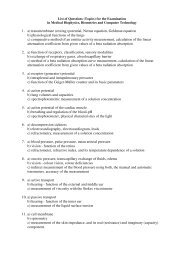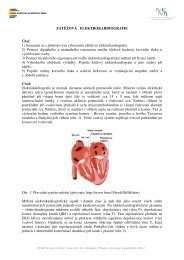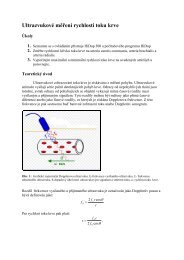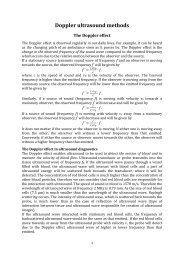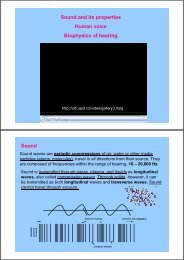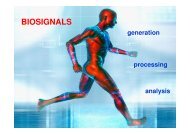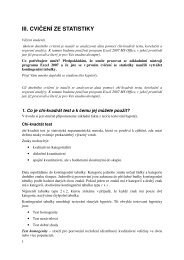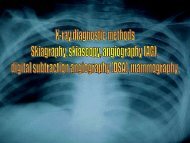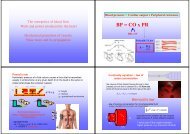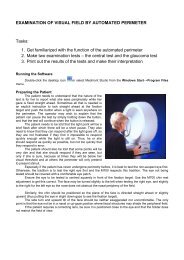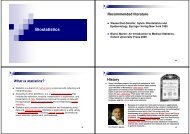Fluid balance and electrolyte distribution in human body.
Fluid balance and electrolyte distribution in human body.
Fluid balance and electrolyte distribution in human body.
Create successful ePaper yourself
Turn your PDF publications into a flip-book with our unique Google optimized e-Paper software.
Regulat<strong>in</strong>g <strong>Fluid</strong> Intake<br />
Thirst<br />
Thirst Quench<strong>in</strong>g<br />
1. 2.<br />
Wett<strong>in</strong>g the oral mucosa<br />
(temporary)<br />
Stretch<strong>in</strong>g of the stomach<br />
Decreased blood/<strong>body</strong><br />
fluid osmolarity =<br />
<strong>in</strong>creased hydration<br />
(dilution) of the blood is<br />
the most important<br />
Regulation of <strong>Fluid</strong> Output<br />
• Hormonal control<br />
– 1 Antidiuretic hormone (ADH) [neurohypophysis]<br />
– 2 Aldosterone [adrenal cortex]<br />
– 3 Atrial natriuretic peptide (ANP) [heart atrial walls]<br />
• Causes of physiologic fluid im<strong>balance</strong>s<br />
– Dehydration: ↓ blood pressure, ↓ GFR<br />
– Overhydration: ↑ blood pressure, ↑ GFR<br />
– Hyperventilation - water loss through lungs<br />
– Vomit<strong>in</strong>g & Diarrhea - excessive water loss<br />
– Fever - heavy perspiration<br />
– exudat<strong>in</strong>g Burns, contusion - fluid loss<br />
– Hemorrhage – if blood loss is severe





